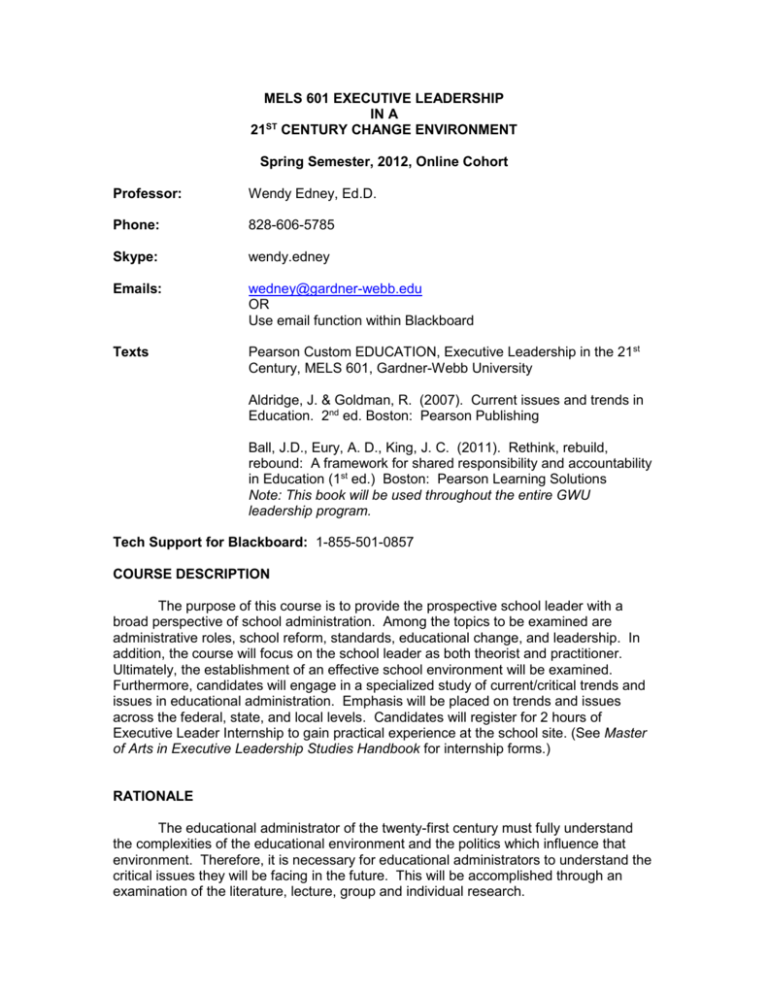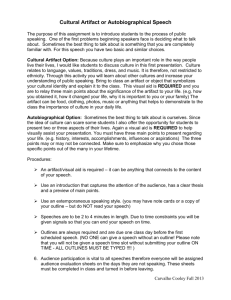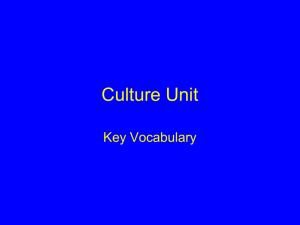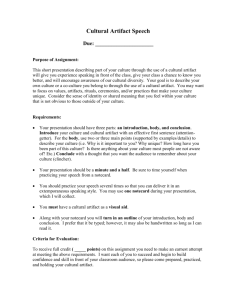sadm 645, critical issues in educational
advertisement

MELS 601 EXECUTIVE LEADERSHIP IN A 21ST CENTURY CHANGE ENVIRONMENT Spring Semester, 2012, Online Cohort Professor: Wendy Edney, Ed.D. Phone: 828-606-5785 Skype: wendy.edney Emails: wedney@gardner-webb.edu OR Use email function within Blackboard Texts Pearson Custom EDUCATION, Executive Leadership in the 21st Century, MELS 601, Gardner-Webb University Aldridge, J. & Goldman, R. (2007). Current issues and trends in Education. 2nd ed. Boston: Pearson Publishing Ball, J.D., Eury, A. D., King, J. C. (2011). Rethink, rebuild, rebound: A framework for shared responsibility and accountability in Education (1st ed.) Boston: Pearson Learning Solutions Note: This book will be used throughout the entire GWU leadership program. Tech Support for Blackboard: 1-855-501-0857 COURSE DESCRIPTION The purpose of this course is to provide the prospective school leader with a broad perspective of school administration. Among the topics to be examined are administrative roles, school reform, standards, educational change, and leadership. In addition, the course will focus on the school leader as both theorist and practitioner. Ultimately, the establishment of an effective school environment will be examined. Furthermore, candidates will engage in a specialized study of current/critical trends and issues in educational administration. Emphasis will be placed on trends and issues across the federal, state, and local levels. Candidates will register for 2 hours of Executive Leader Internship to gain practical experience at the school site. (See Master of Arts in Executive Leadership Studies Handbook for internship forms.) RATIONALE The educational administrator of the twenty-first century must fully understand the complexities of the educational environment and the politics which influence that environment. Therefore, it is necessary for educational administrators to understand the critical issues they will be facing in the future. This will be accomplished through an examination of the literature, lecture, group and individual research. COURSE OBJECTIVES Upon completion of this course, candidates will: o Demonstrate skill in facilitating the articulation, formulation, and dissemination of a vision for school administration o Demonstrate knowledge of state, local, and federal policy as these relate to promoting effective instructional programs and professional growth o Demonstrate knowledge of school climate and the means to assess and evaluate site climate and to develop a comprehensive plan to address climate through managing the organization, operations, and resources in a way that promotes a safe, efficient, and effective learning environment o Manage resources by focusing on effective organizations and management of finances, personnel, and materials o Demonstrate knowledge and ability to articulate a personal educational philosophy based on the standards that relate to effective leadership o Demonstrate knowledge of the 21st Century Executive Standards ATTENDANCE AND CLASS INFORMATION In lieu of attendance requirements due to the nature of online classes, the expectation is that students check into the Blackboard account at least every other day to check for new postings, announcements, etc. An online “presence” should be maintained throughout the semester. KNOWLEDGE AND PRACTICE OF NEW LEADERSHIP STANDARDS: Candidates through the five semesters will address the following six evidences that must be performance related. Relative to the evaluation rubric, create evidence of practices that relate to the proficiency level: 1. POSITIVE IMPACT ON STUDENT LEARNING AND DEVELOPMENT: Evidence that demonstrates the ability to systemically impact the learning and development of ALL students. 2. TEACHER EMPOWERMENT AND LEADERSHIP: Evidence that demonstrates the ability to empower faculty and staff and support teacher leadership 3. COMMUNITY INVOLVEMENT AND ENGAGEMENT: Evidence that demonstrates the ability to involve and engage school and community stakeholders. 4. ORGANIZATIONAL MANAGEMENT: Evidence that demonstrates the ability to effectively and efficiently manage complex organizations. 5. SCHOOL CULTURE AND SAFETY: Evidence that demonstrates the ability to positively impact school safety and culture. 6. SCHOOL IMPROVEMENT: Evidence that demonstrates the ability to effect school improvement. NOTE: The TaskStream rubric will be used and the syllabus is subject to online activities and web enhanced activities relative to research study. If so, this will occur on a day arranged by the professor. You will be notified in advance. ASSIGNMENTS: Note: Items in red should first be submitted to the instructor for review and grade by the due date shown on the table below. Then they should be submitted to TaskStream after suggested revisions are made. The items in blue will be started in this class and submitted to the instructor for review and grade but will be submitted to TaskStream in a subsequent course. Artifact 1: Part A: Develop and Implement a PLC designed to address student learning and development. The candidate with the approval of the school leadership will establish a professional learning community with a minimum of three peers to research areas of need in student learning and development in school. Artifact 1: Part B: Facilitate the Student Learning and Development PLC to investigate the areas of school improvement outlined by the School Improvement Team/Principal. The PLC members will articulate and prioritize the most pressing needs and address those identified needs in an action plan developed in Part C. Artifact 1: Part C: Investigate areas of improvement outlined by School Improvement Team/Leadership. The candidate will lead the PLC to research best instructional practices in the identified need. The PLC will utilize research data and school data to develop the action plan. The action plan should include an evaluation process that recognizes performance as the primary basis for reward and recognition. Artifact 1: Part D: Reflect on the needed improvement in the AAPSL. The candidate will keep a process journal and reflect upon the development process of the AAPSL and the potential impact on student learning and development. Artifact 1: Part E: Action Plan. The candidate will present an action plan that addresses the following components: The importance of the action plan Alignment with Student and Community Learning Outcomes Short-term, mid-term and long-term goals and objectives Specific activities aligned with the designated goals and objectives Indicators of success Measurement techniques of the indicators Clarification of roles and responsibilities Formative and summative assessment criteria Artifact 3: Part A. Needs Assessment. The candidate will conduct a needs assessment to determine the gaps in communication between the internal and external communities and potential opportunities for involvement of these two communities in decisions that have a direct effect on the community and the schools. The needs assessment should include a background description of the setting, a clear statement of the purpose of the needs assessment, a list of participants who participated during the needs assessment process and at what stage of the process the participants were active, an analysis of the findings, a set of recommendations that identifies avenues of communication that will be established, and a set of recommendations that includes both short-term and long-term objectives to establish the SIP. Artifact 3: Part B. Organizational Analysis. The candidate will conduct an organizational analysis to determine the climate of the school. The Teacher Working Conditions Survey may be used in the event a secondary climate survey is not feasible. As a result of the analysis, the candidate should evaluate the school leadership and use the evaluation as a validation instrument for the TWCS and/or climate survey. The candidate will use the results of the school leadership evaluation and the results of the TWCS to determine the strengths and weaknesses of the school leadership. From this analysis the candidate will make recommendations to be addressed in the SIP. The organization analysis should include a background of the organizational setting, the participants in the organizational analysis, a detailed description of the procedures used for data collection and analysis, and the recommendations previously mentioned. Artifact 5: Part A. Climate Survey Analysis. The analysis of the climate or TWCS will include data related to the five areas that the NC State Board of Education have identified to measure. These areas include empowerment, leadership, facilities, resources, and time. The candidate will utilize the data to develop the needs assessment. Artifact 5: Part B. Needs Assessment. The candidate will develop a needs assessment based on the results of the TWCS data. The needs assessment should include a background description of the setting, a clear statement of the purpose of the needs assessment, a list of participants who participated during the needs assessment process, and at what stage of the process the participants were active, an analysis of the findings, and a set of recommendations that identifies strategies that will help lead the school to a safer, more culturally diverse environment for teaching and learning. The needs assessment will be the first of three analyses that contribute to the Cultural Advocacy Action Plan (CAAP). Artifact 5: Part C. School Environment Analysis. This component of the CAAP will require the candidate to be a participant observer in the selected school with a deliberate purpose of gathering qualitative data by observations and interviews of existing staff. The candidate will describe the school setting, the community setting, school environment, student achievement, student and staff cultural diversity, including exceptionalities, race, ethnicity, socioeconomic status, gender, and other differences that may exist in the school and community. The School Environmental Analysis is the second of three analyses that contribute to the CAAP. Artifact 5: Part D. Cultural Competence Audit. The candidate will measure the level of cultural competence at a school by assessing the school vision, mission, school leadership, teacher quality as measured by experience and certifications, teaching and learning, parental involvement and support, conflict resolution, and student achievement. The results of this audit will be the third of three analyses that contributes to the CAAP. The audit should contain a list of recommendations that include specific activities and programs designed to present an action plan that will improve the culture of the school. Artifact 6: Part C. Teacher Working Conditions Survey Analysis. The candidate will lead a team of professional educators in an analysis of the elements of the Teacher Working Conditions Survey (TWCS) and/or other data that are used by the School Improvement Team to draft, monitor, and revise the School Improvement Plan. The candidate will create a visual display that identifies data sources and clearly identifies findings from each source. The TWCS Analysis Project will include the visual display outlined above, a reflection on the usefulness of the display related to student achievement and school goal attainment, and a class presentation complete with a notetaking guide. GRADING FOR THE COURSE: 80% of your grade will come from the Artifacts and 20% will come from class participation which will be discussion board prompts, reflections and short narrative assignments. A AB+ B BC 95-100 90-94 85-89 80-84 76-79 75-79 Learning Tasks and Activities Week/Module One and Two Module I: Strategic Leadership Dates Will be posted by January 16, 2012 and due by midnight, January 30, 2012 Chapters Ubben 1 & 4 Assignments and Artifacts Due Complete Module One in Blackboard Aldridge 4 Artifact 5A Balls 6 Three and Four Module II: Instructional Leadership Will be posted by January 30, 2012 and due by midnight, February 13, 2012 Begin work on Artifacts 1A, 1B, and 1C. (These will be due at end of Module 3.) Ubben 7 & 8 Complete Module Two in Blackboard Aldridge 5, 6, 7, & 12 Artifact 6C Balls 14, 15, & 17 Continue work on Artifacts 1A, 1B, and 1C. (These will be due at end of Module 3.) Introduce Artifacts 1D and 1E Five and Six Module III: Cultural Leadership Seven and Eight Module IV: Human Resources Leadership Will be posted by February 13, 2012 and due by midnight February 27, 2012 Will be posted by February 27, 2012 and due by midnight, March 12, 2012 Ubben 2, 3, 5 & 6 Complete Module Three in Blackboard Aldridge 2, 9, & 10 Artifact 5B Balls 3, 4, & 7 Ubben 9, 10, & 11 Finish Artifacts 1A, 1B, and 1C. Balls 10 & 12 Artifact 1D Complete Module Four in Blackboard Artifact 1E Nine and Ten Module V: Managerial Leadership Will be posted by March 12, 2012 and due by midnight, March 26, 2012 Ubben 12, 13, & 14 Complete Module Five in Blackboard Artifact 3A Eleven and Twelve Module VI: External Development Leadership Will be posted by March 26, 2012 and due by midnight on April 9, 2012 Ubben 15 Complete Module Six in Blackboard Aldridge 3, 8, & 11 Artifact 3B Thirteen and Fourteen Will be posted by April Aldridge 1 & 2 Module VII: Micro9, 2012 and due by Political Leadership midnight on April 23, Balls 11, 23, & 7 2012 Complete Module Seven in Blackboard Artifact 5C Artifact 5D Week Fifteen Final Exam Will be posted by April 23, 2012 and due by midnight on April 30, 2012 Complete Module Eight in Blackboard Final exam will be a presentation of 1A-1E.






